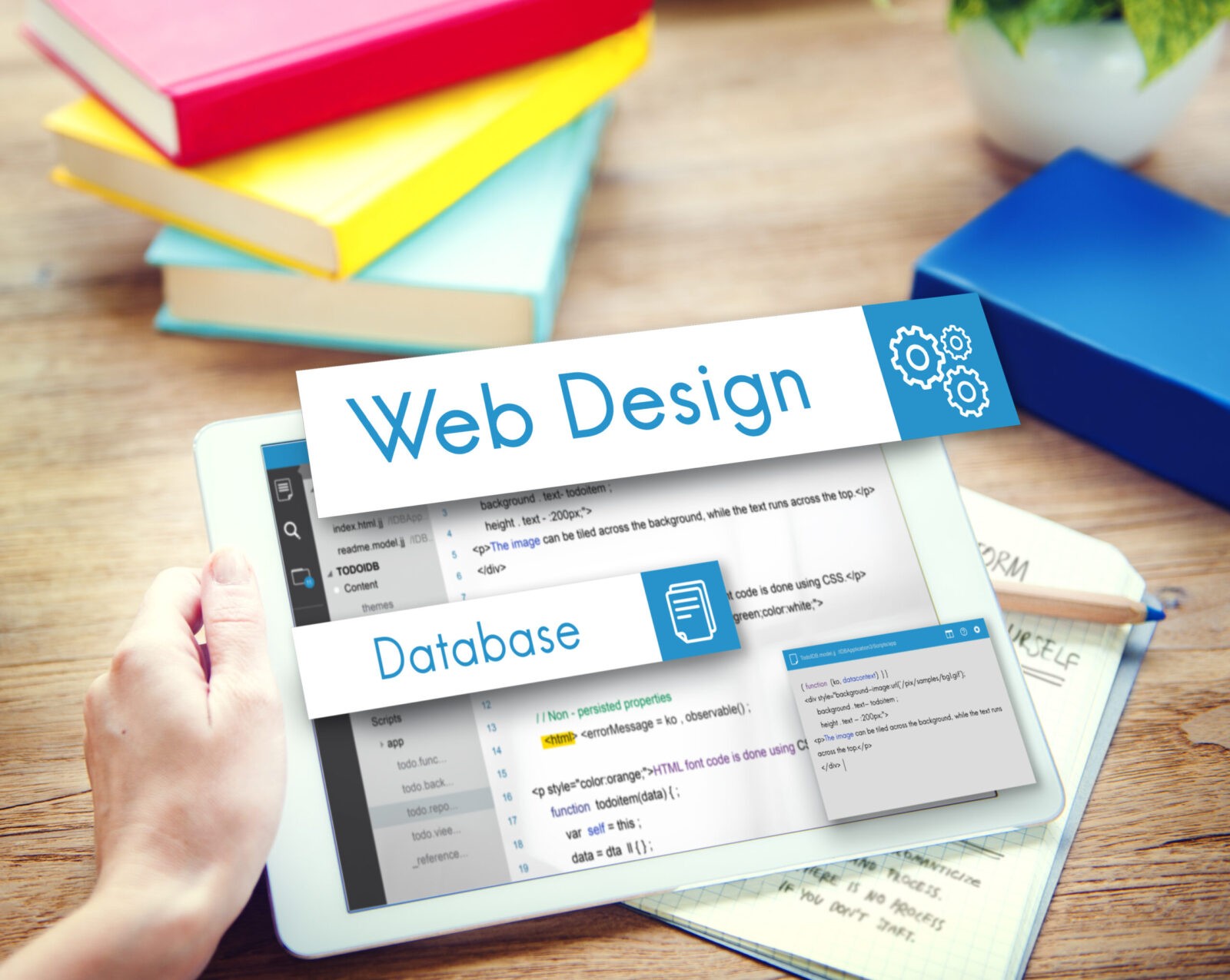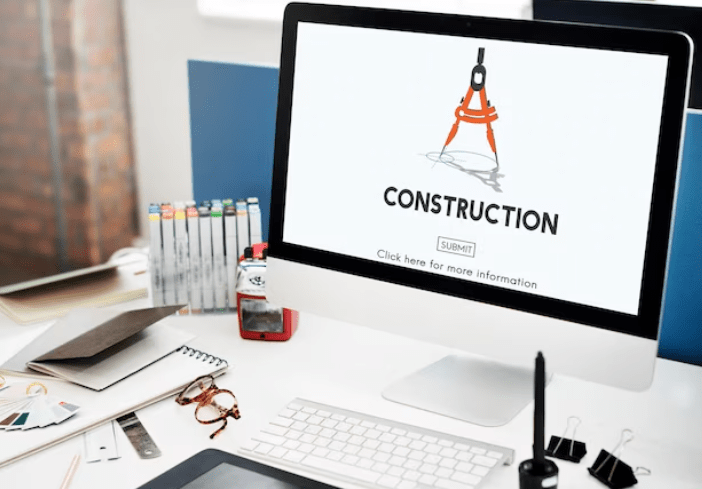
Creating Websites
- Home
- Creating Websites



WHAT WE ARE GREAT AT
BUILDING WEBSITES - WORDPRESS DEVELOPEMNT
Write to us and we will help you create an interactive website that will help you develop your business.
We specialize in offering comprehensive WordPress website services, from expert theme customization and plugin integration to seamless performance optimization, ensuring that your online presence not only looks impressive, but also performs flawlessly.
Our specialization
THE SERVICE WE PROVIDE

Website Design
Our website design services go beyond aesthetics, creating visually captivating and intuitive digital experiences. We combine creativity with functionality to create websites that not only captivate your audience, but also increase engagement and results for your business.

Solution for the E-commerce market
Our team of experts build e-commerce websites using WordPress and popular plugins like WooCommerce

Customizing Themes
Customize existing themes to fit the client's unique branding and functionality requirements

Management and Support
We have teams with specialist knowledge and experience in WordPress, website development and digital security.
Building websites – key steps and tools
Creating your own website is often associated with certain expenses, but it is worth understanding that there are various methods and tools that can reduce costs and enable you to create a professional website without the need to engage an agency or freelancer. It is worth noting that determining costs is a key stage in the website creation process, especially if we plan to outsource the creation of the website to an external company. That’s why it’s important that we have a clear picture of the costs from the beginning.
1. Creating a website yourself without coding: Even if we have no experience in programming or website design, there are tools that allow us to create a website without having to write code. Drag and drop platforms allow for a simple and intuitive creation process, where page elements can simply be dragged and dropped into desired locations. This is an ideal solution for people who want to have full control over the appearance and content of their website, but do not have specialist technical knowledge.
2. The role of a drag and drop system: Drag and drop systems are not only tools for simple page building, but also a great solution for people who want a quick and flexible way to customize their website. Thanks to them, we can easily add new sections, change the page layout or modify its appearance, without the need to engage programmers or graphic designers.
3. Automatic website optimization: An important aspect of website development is also optimization for search engines, especially Google . Many platforms offer automatic SEO optimization tools that help improve the visibility of our website in search results. Thanks to them, we can optimize titles, descriptions, meta tags and URL structure , which can significantly affect the position of our website in the rankings.
4. Support for the positioning process in Google: When choosing a tool to create a website, it is worth paying attention to whether the platform offers functions that support the positioning process in Google. Some website builders have built-in tools for monitoring website traffic, analyzing keywords or generating SEO reports, which can be extremely helpful in effectively positioning our website.
Building websites: Easier than it seems
Creating your own website is not black magic. It may seem complicated at first, especially when we’re just starting out and don’t fully understand how it works. However, it is worth noting that nowadays access to tools and knowledge about creating websites is much easier than before.
The opinions of specialists who claim that creating a website requires the involvement of an entire team of experts and can be very expensive are often demotivating. There is a grain of truth in this, especially when it comes to large, advanced websites. However, for smaller projects, such as business card platforms or simple company presentation websites, this process can be much more accessible.
If you decide to create a website yourself , you don’t need a whole team of specialists at once. All you need to do is get involved personally or with the help of one freelancer. Designing such a website can be much easier if we use the right tools and have a bit of free time.
Of course, even with simple projects, it is worth remembering the basic principles of website design. Then the creation process becomes more accessible and effective.
To sum up, although building a website may seem difficult at first glance, with the right approach and use of available tools it can be much easier and more accessible to each of us.
Starting website development
may seem a bit overwhelming at the beginning, especially for those who are just taking their first steps in this field. However, there is no reason to worry. There are many ways to start this adventure efficiently and effectively.
First of all, it’s worth noting that both creative abilities and practical technical skills are useful for creating websites. It’s a good idea to practice these skills on an ongoing basis to continually improve. The combination of innate talent and systematic practice allows you to constantly improve your level.
For those just starting out on their web design journey, there are plenty of opportunities to learn and improve your skills. It is worth using online courses, guides or taking part in workshops that will help you understand the basics of website design.
One of the popular approaches to creating websites is to use the „drag & drop” technique, i.e. dragging and dropping elements on the page. This method is based on simply arranging elements in selected places, which is especially helpful for beginners. However, it is important to plan the website structure well and have a clear outline of what we want to achieve with our website.
Website design
it is not only a matter of arranging elements, but also taking care of aesthetics and user experience (UX/UI) . Nowadays, it is important that the website is not only aesthetic, but also intuitive and easy to navigate. Therefore, it is worth spending time learning the principles of UX/UI design to be able to create a website that will be attractive and functional for users.
For those who are just starting out and don’t have enough experience yet, working with a website template may be a good solution. Templates offer a ready-made structure and graphic design, which makes the process of creating a website much easier. However, remember not to overdo personalization and not add too many unnecessary elements, which could complicate the design and make it difficult for users to use the website.
In conclusion, website development can not only be a rewarding experience, but also a relatively simple process if approached with the right plan and tools. The key is to combine creativity with practical technical knowledge, which will allow us to create an effective website that not only looks good, but also supports business development and generates user interest.
The history of website development is fascinating
and full of changes that have influenced the way we build websites today. Previously, to create a website, it was necessary to have deep knowledge of HTML and other web technologies. Once we had this skill, the door to the world of actual website development opened for us.
The first step in popularizing the possibility of creating your own websites were platforms such as Geocities. Created in 1994, Geocities was a kind of forerunner of today’s social networking sites. Although it was quite slow and offered limited visual possibilities, it was a huge advance in the field of accessibility and website creation.
In the following years, with the development of technology, the first programs for creating websites began to be created. These simple and intuitive tools have evolved to enable increasingly advanced website designs. The so-called website builders that allowed you to build websites without the need for deep programming knowledge.
However, as is often the case, the first versions of these programs left much to be desired.
Page optimization
remained low and the generated code often contained unnecessary elements, which resulted in longer website loading times.
Another barrier was the need to install programs to create websites on disk and high licensing costs. This made website development unattainable or too expensive for many people.
However, with the development of technology and the popularity of the SaaS (Software as a Service) model, all this has changed. Starting around 2013, website builders stopped being installed on disk. All you had to do was log in to the SaaS application to start working on your own website. No need to buy a license or worry about software compatibility.
Modern website creators
They have another huge advantage – they allow you to create websites completely free of charge. Thanks to them, anyone can build their own website without incurring additional costs.
In this way, the history of website development has come a long way from the days of Geocities to modern cloud-based website builders. They have made website creation more accessible and accessible to everyone, opening the door to creativity and innovation in online design.
It’s obvious that the opportunity to create a professional website without incurring costs is tempting. But is this actually realistic? The answer is yes, it is possible. Now the question is how to achieve this goal?
By using website builders, the entire process becomes much easier. Thanks to them, we do not have to be coding experts to create a functional and aesthetic website. All you need is an idea, a bit of time and enthusiasm to turn your visions into reality.
In practice, in just a few dozen minutes we can have a ready-made website that will be fully functional and, most importantly, it will not cost us a penny. It’s amazing how today’s website builders can generate code that is so much better than their predecessors. This will make our website run faster and more efficiently, which translates into a better user experience.
Moreover, the positioning of such websites is no different from those created using other content management systems (CMS). This means that even though our website is free, we can still count on high visibility in search results, which can help to increase the number of visitors and potential customers.
Therefore, creating websites for free becomes not only possible, but also extremely attractive. Without having to invest large sums of money, we can create a professional website that will meet our expectations and contribute to the development of our business or online project.
The evolution of website design and development
is a fascinating issue that is constantly transforming and adapting to the changing needs of users and technological requirements. In the past, websites focused mainly on the transmission of textual information, and their design was based mainly on simplicity and readability. However, the modern view of websites goes beyond the limits of merely functional communication and focuses on interaction, aesthetics and responsiveness.
Nowadays, an important aspect of website design is following current trends and adapting to them.
Website creation companies,
such as Global SEO , constantly monitor the latest trends in web design and try to implement them in practice so that the websites they create are modern and attractive to users. These trends not only make websites look aesthetically pleasing, but also improve their functionality and usability.
One of the key aspects that is becoming more and more important is website responsiveness. In the age of development of mobile devices, the website must be adapted to various screen sizes to ensure comfortable use for users regardless of the platform used. A properly designed responsive website automatically adjusts to the screen width, which makes its content readable and easily accessible on both computers and mobile devices.
It is also worth noting the difference between a mobile and responsive website. A mobile website, although it provides users with a separate interface for mobile devices, can lead to problems related to the need to maintain two different URL addresses and a decrease in the professionalism of the brand image. In turn, a responsive website, by dynamically adapting to various devices, eliminates these problems, which translates into consistent communication and better user experience.
Website creators,
such as Global SEO , focus on simplicity and convenience in creating responsive websites. Thanks to them, it is possible to quickly and effectively design websites that automatically adapt to various devices. Additionally, the ability to manually edit each element allows for full control over the appearance and functionality of the website.
It is worth emphasizing that responsive websites not only improve user experience, but also have a positive impact on search engine positioning, especially after the introduction of Mobile First Indexing by Google . Therefore, when designing websites, it is worth taking into account the principles of responsiveness, which will contribute to both increased user satisfaction and improved website visibility in search results.
Modern website design and creation is not only about creating aesthetic websites, but above all, taking care of functionality, accessibility and responsiveness. By focusing on these elements, we create websites that meet user expectations and are in line with the latest trends in web design.
Website security
This is an extremely important element of its creation, which affects not only the protection of the platform itself, but also the safety of users using it. Nowadays, when cybercrime is constantly increasing, ensuring an appropriate level of security becomes a priority for every website owner.
One of the key issues regarding website security is the use of the HTTPS protocol. This protocol, unlike standard HTTP, provides additional security by encrypting data sent between the web browser and the server thanks to the SSL certificate. Websites without an SSL certificate are considered unsafe because they use an unencrypted connection, which puts user data at risk of theft or manipulation.
Failure to apply appropriate security measures when creating a website can lead to many negative consequences, such as loss of user trust, a decrease in the number of visits or even theft of confidential data. Therefore, an SSL certificate is a key element of every secure website that should be included at the stage of its creation.
At Global SEO, we are aware of the importance of website security, which is why we add an SSL certificate to each website variant for free. Thanks to this, our users can be sure that their websites are properly secured and meet the highest online security standards.
The conclusion from the above is that keeping your website secure is not an option, but a necessity. Without appropriate protective measures, the website may be exposed to various types of attacks and violations, which may negatively affect the reputation and functionality of the platform. Therefore, it is worth taking care of an SSL certificate already at the stage of creating the website to ensure safe and secure use of it by users.
Creating websites
that’s one thing, but optimizing them is a completely different story. When we decide to start working on a website, we must not forget about optimization. This is extremely important due to several reasons that affect both the positioning of the website in search engines and the overall experience of users when using the website.
What exactly is website optimization? In short, it involves customizing various elements of a website, such as texts, images and codes, to speed up its performance. This is important from the point of view of search engine algorithms, which prefer fast websites, especially in the context of the mobile version of the website. Therefore, it is worth taking care of optimization already at the stage of creating the website.
Most website building tools offer the ability to optimize, but sometimes this may require some technical knowledge. However, it is worth noting that by using the help of Global SEO, we will optimize the code for our users, which is a significant advantage.
One of the main problems that can slow down a website is large graphics. To avoid problems with slow-loading images, it is worth following a few simple rules. First of all, it is worth ensuring the appropriate resolution of the graphics, e.g. 1400 pixels wide, which is enough to maintain good quality on most devices. Secondly, it is worth choosing a file format that can be easily compressed, e.g. using automatic compression tools such as TinyJPG. Thirdly, it is worth considering using vector graphics that are small in size and scale perfectly.
Using Global SEO , we can use a free bank of photos and icons, which makes the process of creating a website much easier. Thanks to this, we do not have to look for graphics on the Internet or worry about their quality or size.
Website optimization is a key element of creating a website,
which affects its operation and positioning in search results. Therefore, it is worth taking care of optimization already at the design stage, which will avoid problems related to slow website operation and provide users with the best possible experience when using it.
Creating websites
it is not only a matter of aesthetics or functionality, but it is also important to ensure optimal visibility in search engines, i.e. positioning. It is worth taking a closer look at this process and understanding how important its role is in building websites.
Website positioning,
i.e. the process of adapting website content to the queries and phrases that users enter into the search engine is a key element of the success of every website. Especially for people who are not SEO experts, page creation tools can support the process of learning the basic principles of positioning.
The process of website positioning can be divided into on-site SEO and off-site SEO. The first one focuses on adapting website elements, such as page names and descriptions, alternative image texts or header structure, to the requirements of search engines. When choosing a website creation tool, it is worth paying attention to whether it allows you to easily introduce key SEO elements.
Tools such as Keyword Planner with Google Ads
whether tools such as Ubersuggest or Ahrefs can be helpful in selecting appropriate keyword phrases to optimize website content. It is also important to understand that positioning is not only a matter of inserting keywords into the content, but also taking care of the quality of the content, page loading speed and its responsiveness.
It is also worth remembering about off-site SEO,
i.e. external links leading to our website. It is important that they are of high quality and come from valuable websites with similar topics. In this case, website creation tools can also help you add the necessary elements responsible for on-site SEO and monitor the effects of SEO activities.
Website positioning
This is a process that is extremely important for its visibility in search engines and attracting organic traffic. Therefore, it is worth paying attention to it already at the stage of creating the website and using appropriate tools and strategies that support this process.
Chapter II
There are many key principles and steps when creating websites
, which must be taken into account to ensure the effectiveness and functionality of the website.
Some of these principles concern the design of the site itself, while others focus on the functionality and purpose of the site. We discuss many of these elements in our articles, but it is worth emphasizing once again that when creating a website, we should be guided not only by our own preferences, but above all by the needs and expectations of users. They will be the main beneficiaries of our work, and user satisfaction translates into the success of the website.
Our guide „Designing and creating a website – create a website yourself or entrust it to Global SEO
“step-by-step guide” was created for people looking for a contractor to design and create a professional website that will bring business benefits by acquiring customers. Before making a decision, it is worth reading our guide, which will help you understand what is important in the process of creating a website and what steps should be taken to ensure its success in attracting customers and generating profits.
In the article you will learn, among other things:
• What elements are key when creating an effective website?
• What should you pay attention to when designing a website to ensure its functionality and attractive appearance?
• What are the stages of website implementation from idea to final implementation?
• Which elements cannot be omitted if you want to be successful in attracting customers through your website?
Thanks to this guide, you will be able to make conscious decisions regarding the design and creation of your website, as well as optimize it in terms of acquiring customers and generating profits.
Website planning,
which is to bring benefits and acquire customers requires careful consideration of goals and strategies. It is not only a matter of aesthetics or modern appearance, but above all, functionality and effectiveness in achieving the intended goals.
Every future website should have a specific goal or goals. This may be generating inquiries from potential customers, presenting information, direct sales of products or services, registering for training, etc. It is important that when implementing a website, we are aware of why we are doing it and what goals we want to achieve. A website without a clear purpose may be ineffective and a waste of resources.
Professional website
it must not only be aesthetic, but above all functional and effective in attracting customers and generating profits. Instead of focusing solely on appearance, the focus should be on ensuring that your website meets users’ needs and leads them to take desired actions.
A well-designed website can be
treated as a 24-hour salesperson who works continuously, attracting customers and converting them into sales. It is important that the website is easy to use and intuitive for users, and not only meets our personal aesthetic preferences.
It is also crucial to ensure that the website will generate valuable traffic from search engines, answer customer questions, facilitate their contact and complete transactions. It should also be an integral part of the company’s marketing strategy.
When creating a website,
emphasis should be placed not only on its appearance, but above all on its functionality and effectiveness in achieving business goals. Ultimately, users and potential customers are the most important, so the website should be designed with them and their needs in mind.
Creating an effective website –
step by step
If you are thinking about changing your website, but you don’t know how to approach it, you’ve come to the right place. This process may be crucial to the success of your business, so it is worth approaching it thoughtfully and professionally. An incorrectly implemented change may result in losses, either in the form of loss of existing website traffic or the opportunity to acquire new users. Fortunately, there are proven methods that can help you achieve success in this area.
It doesn’t matter whether you are planning a completely new website or want to improve the current one. However, many entrepreneurs make one key mistake – they focus on themselves, instead of their potential customers. This approach, which emphasizes the needs and expectations of users, is crucial when making decisions related to website design. It is not you who should decide what content and subpages will be on your website, but your potential customers.
Therefore, in order to effectively turn the website into a machine generating inquiries and sales, it is necessary to eliminate this problem. Our many years of experience in acquiring customers from Google have allowed us to develop an effective action plan that always brings results. It is worth taking a closer look at it to understand what steps to take to achieve success in creating and optimizing a website.
Please watch the video or read our process below to learn more about our approach and how we can help you achieve your website goals.
Analysis of customer needs and keywords:
following the right trend
If you have already developed a marketing strategy or defined target groups in the past, now you have the perfect opportunity to refresh and expand them. Internet marketing opens the door to a much larger audience and more diverse groups, so why not take advantage of this potential? To accurately determine your target group, it is worth creating a virtual representative, called a persona, that will perfectly reflect your target group. Creating a persona involves answering a number of key questions that will help you better understand the needs and goals of your potential customers.
When creating a persona, you can draw on your existing knowledge and experience, especially if you previously ran a stationary company.
A customer profile is created based on a number of important questions, such as:
1. What customer problem does your product or service solve?
2. Does the customer need the product for professional or hobby reasons?
3. What does an average customer’s day look like?
4. What times would they likely use your product?
5. What are your customer’s life goals and how can your product help them achieve them?
6. Is the client young or older? How old is he?
7. Is the client a woman or a man?
8. Is he from a big city or a small town?
9. What is his education and what is his profession?
Although the ideal customer rarely exists in reality, the persona will point you in the direction in which you should go. As your business develops on the Internet, people who previously did not have access to your products or services for various reasons may also become your customers.
Creating a Customer Profile is crucial because many subsequent marketing and business activities are based on it. Therefore, it is worth spending time on its thorough development at the very beginning to be able to effectively direct your activities in the future.
Keyword and competitor analysis: The key to SEO success
Once you know your ideal customer, the next step will be to translate their problems and queries into the language used in search engines – that is, into keywords. Having this knowledge is extremely valuable because it will enable you to effectively build a website that will be easily found by your potential customers. In short, this is what SEO (search engine optimization) is all about, i.e. the positioning of websites in search engines.
But how do you find out what keyword phrases your potential customers are typing? There are several ways:
a) Taking on the role of a customer and checking the competition: This method seems to be the simplest in theory – just imagine that you are looking for a given product or service yourself. Although it may not provide complete and accurate results, it has one major advantage – it will allow you to find out which competing companies are well positioned and for which keyword phrases their websites are positioned. Simply enter your competitor’s address into an SEO tool like Ubersuggest.io or Senuto to get a list of the keywords these sites rank for. Additionally, you will be able to see the most popular posts on these pages, which will provide you with valuable tips when creating content for your website .
b) Checking Google’s suggestions: This method is also simple, but may provide rather general results. It involves entering a keyword phrase into the Google search bar and then checking „similar searches” at the bottom of the results. This is a valuable lesson because it allows you to understand how searching in Google works using different keyword phrases.
Using both of these methods will allow you to better understand the behavior of your potential customers on the Internet and provide them with content that is important and valuable to them.
Planning the structure of subpages and website content: The key to acquiring customers from Google
The key element of an effective website is its structure of subpages and content. A good structure allows potential customers to easily find the website depending on the phrases they enter in Google. This increases the chance of keeping them on the website and converting them into customers. Planning your website structure should be based on the keyword analysis you have conducted earlier.
Each subpage on the website should have a specific purpose and require a specific action from the user. It is worth planning the structure and content well to attract the attention of potential customers from Google, without having to spend money on paid advertising. Although this is not an easy task, with the right approach and work, you can achieve a significant increase in website traffic, which translates into a larger number of potential customers.
By using keyword analysis, you know what users are looking for on the Internet. Use this knowledge to appropriately arrange key phrases on subpages, which will make them easier to find by search engine algorithms and potential customers. Also remember about the appropriate structure of the content, which will be clear and attractive to the recipient.
If you want to learn more about SEO strategies and how to successfully acquire customers from Google.
Wireframe design
Assuming that you already have an outline of the website structure based on what your potential customers are looking for, now you need to plan the appearance of individual groups of subpages. You will likely use different layouts for the home page compared to the product card. This is important in terms of usability and sales effectiveness. At this stage, focus solely on the layout and placement of elements. Typically, at this point, mockups, also called wireframes, are created that present the overall layout of the page, such as:
With this approach, you can plan the arrangement of key elements in business terms and focus on what the customer will actually see. Issues related to colors, graphics and other elements will be considered in the next stage. These mockups should be created based on previous content plans to adapt the layout and placement to the page content, not the other way around.
For the same reason, it is not always worth focusing solely on the competition. There is a risk that duplicate patterns are not always the optimal solution. Although it is known that this approach requires more time and money, it will pay off when more customers reach you. For most companies, a well-designed website can bring even several times higher profits. Many businesses invest in SEO/positioning or paid advertising (e.g. Google Ads, Facebook Ads, etc.) without realizing that they could spend less if their website’s performance were higher. Personally, I encourage you to create such mockups and conduct an analysis based on the earlier stages in order to reduce your company promotion expenses later.
Website design from a graphical perspective
We have now reached the stage of designing the appearance of your future website. Now is the right time to start creating a graphic design for the website based on previously designed mockups. The whole process brings certain benefits. First of all, the graphic designer already knows what the page layout should look like, his only task is to create a visually attractive form that will present the content. Thanks to this approach, the graphic designer has no freedom to excessively decorate the page. It is known that some eye-catching graphic elements are not always effective, sometimes they are used only for the visual effect alone. Designers may be willing to experiment with unusual solutions, but from a business point of view this is not always beneficial. Remember that the graphic design of the website should be neat and highlight important elements. It is the content of the website that is most important for attracting traffic from Google and convincing the customer to make a purchase decision.
If you had to choose between two options: the most beautiful website in the world, but without specific content, and a website that is modest in terms of graphics, but with professional content that convinces you to buy, which would you choose? Of course, the first option may be more attractive to the eye, but the second one is definitely more beneficial for your business. Remember that your website is a work tool. Just like in the case of a transport company, where the technical parameters of trucks are important, not their external appearance, the users of your website expect specific information or actions, and do not focus on its appearance. We also live in the era of mobile devices, where websites must work quickly and be adapted to mobile screens. There is limited space for unnecessary graphics.
To summarize this step, design the website based on previously created mockups. Let the graphic design support the recipient in focusing on the content and help generate customers.
Choosing the right content management system (CMS)
for your website, this is a key decision that may have long-lasting consequences. CMS, i.e. Content Management System, is responsible for controlling and updating the content on the website in an intuitive way for users without specialist technical knowledge. When choosing a specific CMS, it is worth considering several important factors to make sure that the selected system will meet your needs.
To begin with, it is worth considering whether you need a CMS system at all. There are websites that do not require frequent updates, so a complicated CMS may be unnecessary. However, if you plan to update the content on your website regularly, a content management system will be essential. WordPress is a popular choice, but remember that there are other equally effective systems that may better suit your needs.
It is also important to note that the choice of CMS is not the only factor influencing the success of a website. Other elements are also important, such as a graphic template, plugins or modules that affect the appearance and functionality of the website. Therefore, it is worth spending time choosing the right tools that will allow you to optimize your website for users and search engines.
Please remember that most CMS activities take place in the background and are not visible to the user. The way content is presented is crucial to the success of a website, not just the content management system itself. Therefore, it is important to focus not only on the choice of CMS, but also on other elements that build the structure and appearance of the website.
Choosing the right CMS system is an important decision that affects the functionality and performance of your website. However, it is equally important to take care of other elements, such as graphic templates or plugins, which may affect the final final effect of the website.
Deciding on the proper creation of a website is a key step in the implementation process. After determining the structure, content and graphic designs, it is necessary to transfer all these elements to HTML. However, before taking this step, an important decision must be made regarding the technology that will be used. The options are limited to two main approaches.
The first option is the classic approach, based solely on HTML/CSS/JS. The second option is to use modern technologies such as JS frameworks, e.g. Angular, React, Vue, etc. In this situation, I definitely recommend choosing the first option, i.e. the classic approach. New technologies, although increasingly proposed by companies creating websites, often lead to style over substance.
Modern frameworks such as Angular, React or Vue are intended mainly for building complex applications and large websites. Comparing them to bank transaction systems, it can be seen that they are mainly used in areas requiring advanced functionality. However, for most business websites, such solutions can be overly complex and expensive.
The use of modern technologies has a number of disadvantages for the business owner:
• Higher costs of creating and implementing the website.
• Difficulties and higher costs related to possible changes in the future.
• Difficulty in finding a specialist to make corrections at a reasonable price.
• Higher infrastructure maintenance costs.
• Problems with indexing pages by search engines, which may affect the visibility of the page in search results.
Therefore, at this stage of the website creation process, I strongly recommend choosing a classic approach, with a strong emphasis on optimizing the website speed and its responsiveness, i.e. adaptation to various mobile devices. This approach not only ensures efficiency, but also saves financial and time resources, which is important for every business owner.
Publishing a website, i.e. choosing the right hosting and domain, is a key step in the website creation process. Hosting is a service provided by hosting companies that store website files on their servers and make them available to users. Choosing the right hosting can be difficult, so it is worth spending time carefully analyzing the offers of various providers.
Hosting is nothing more than providing disk space on a server that is constantly connected to the Internet. Thanks to this, you can store website files, multimedia content, e-mail accounts and much more. It is important to choose a hosting that will ensure uninterrupted operation of the website, so it is worth paying attention to the uptime guarantee and the quality of customer service.
There are many factors to consider when choosing hosting. One of the key factors is disk capacity, i.e. the amount of space available on the server. You should also check whether the company offers technical support and whether it performs regular backups of customer data.
It’s also worth noting that while free hosting options exist, they are often not the best choice for professional websites. Free hosting may be slow, unreliable and display unwanted advertisements, which may negatively affect the image of your website. Therefore, if you want your website to be credible and professional, it is worth investing in paid hosting.
To sum up, choosing the right hosting and domain is a key step in the website publishing process. It is worth spending time carefully analyzing the offers of various suppliers and choosing the one that best suits your needs and expectations.
Continued development of the website
it is not only a natural process, but also a key element of successfully running an online business. Publishing a website is just the beginning, and to attract customers and keep their interest, it is necessary to constantly improve and update the website content.
Once you have created a website, you cannot allow it to „fall” on its own. Continuous development of the website means, among others: adding new content for customers, such as products, services or categories. It is also necessary to take care of your company blog, which can be a treasure for your business. A blog allows you to share valuable information, positions you as an expert in a given field, and attracts new customers by providing interesting content.
Publishing valuable articles on your blog opens the door to new opportunities to reach potential customers. Thanks to them, you can reach people who do not know your company yet, but are looking for a solution to their problems related to your industry. Blog articles attract traffic to the website and can turn undecided Internet users into loyal customers.
Additionally, publishing high-quality content can earn you mentions on other websites, which helps build your reputation and increase your online visibility. Thanks to valuable content, your company can become recognized as an expert in a given field, which builds trust with customers and leads to long-term loyalty.
By educating readers, providing them with value and solving their problems, you build a positive brand image and gain loyal customers. Creating expert content is an investment in customer relationships that brings tangible benefits in the form of increased trust, loyalty and conversion.
Therefore, continuing the development of the website by publishing valuable articles and ensuring the quality of the content is not only a way to keep the website „alive”, but also an effective strategy for building customer trust and loyalty, which translates into business success in the long run.
The issue of costs associated with creating a website is an extensive topic that is worth analyzing carefully before making a decision. The process of creating a website is much more complex than it may seem at first glance, and many factors may affect the final price.
The first key aspect of cost is the extent of research that must be conducted before design begins. These studies are aimed at collecting important information regarding the company’s activities and understanding the needs and expectations of the target group. The more detailed the research, the better the knowledge about users, which can help to increase the conversion rate.
Another factor that affects the price is the number of unique views. Each page layout, which is designed only once and used many times, constitutes one unique view. Designing different views and the time needed to create them can have a significant impact on the final price of the project.
Preparing a graphic design is another important stage of website production. This is where the entire appearance of the website is created, taking into account customer preferences and user needs. Graphic design has a large share in the final price and depends on the number of unique views and the time spent on its creation.
Implementing a content management system (CMS) also has an impact on costs. Although systems such as WordPress make it easy to add content, they require constant care, updates and protection against threats. Implementing a CMS may increase project costs, so it is worth considering whether it is necessary for a given website.
Additionally, non-standard solutions, such as advanced forms or booking systems, may also affect the final price of the website. The costs associated with publishing the website on the Internet, including domain and server maintenance, should also be included in the overall cost assessment.
The price of creating a website
depends on many factors, such as the scope of research, the number of unique views, graphic design, CMS implementation and non-standard solutions. It is worth carefully analyzing all these elements before making a decision to have a full picture of the costs associated with the project.
Newsletter
Sign up for our mailing and build your awareness

